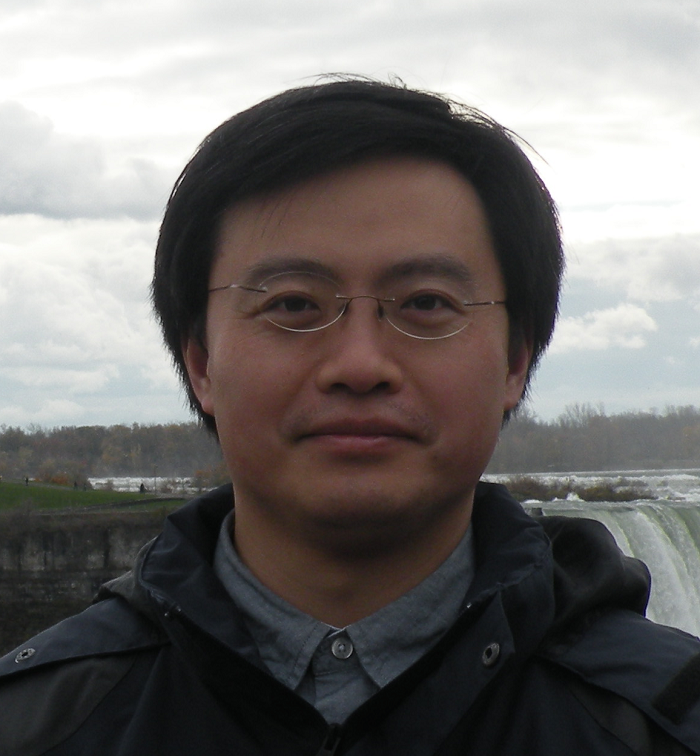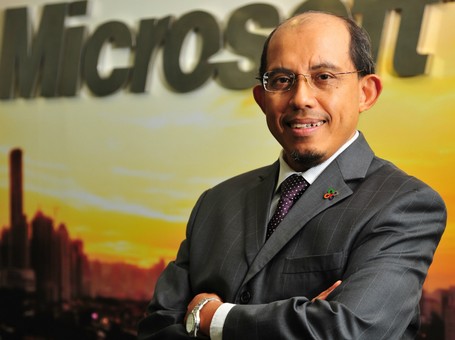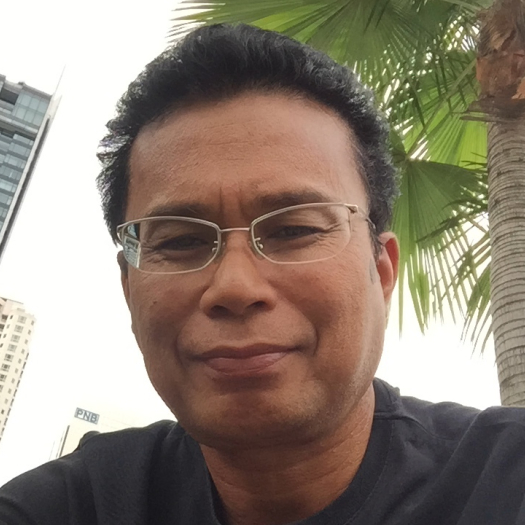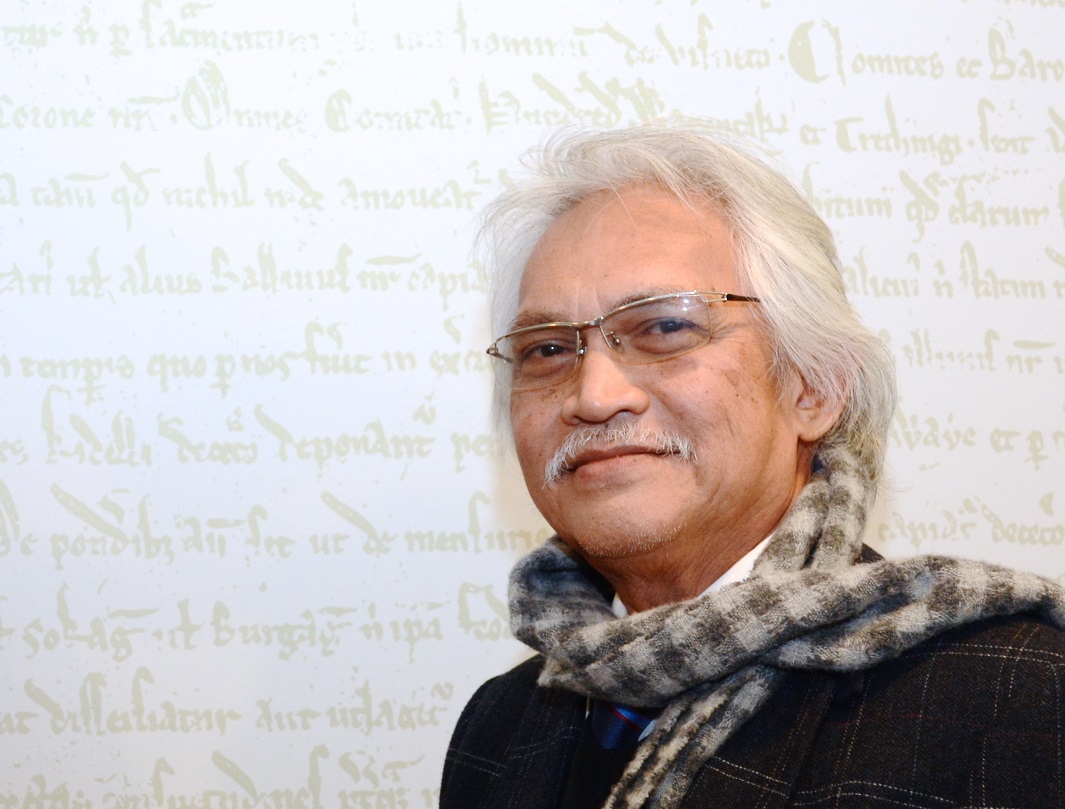Keynote Speakers

Prof.Dr. Dawei Song
The Open University, UK
Speech Title: A quantum theoretical perspective for exploratory information access and retrieval
Abstract: Interactive exploration over online information spaces has become a preferred way of acquiring information and useful knowledge relevant to a user’s constantly evolving information need. Central to the process are user’s continuous interaction, sense making and decision making about information, which result in various phenomenon that cannot be sufficiently explained by traditional approaches. This talk will introduce a non-classical, quantum theoretical perspective, from which exploratory information access and retrieval is modelled based on the quantum probability framework, and some recent work we have done in this direction.
Biography:
Professor Dawei Song received his Ph.D. from the Chinese University of Hong Kong in 2000. He is currently a Professor at Tianjin University, China, and also a Professor of Computing at The Open University, UK, since 2012. Prior to these appointments, he worked as a Professor of Computing since 2008 at the Robert Gordon University, UK, where he remains as an Honorary Professor since 2012. He has also worked as a Senior Lecturer and Research Director at the Knowledge Media Institute of The Open University, UK, during 9/2005-10/2008; and as a Research Scientist (since 9/2000) and Senior Research Scientist (since 5/2002) at the Cooperative Research Centre in Enterprise Distributed Systems Technology, Australia.
His main research interest focuses on novel formal models (particularly quantum theory inspired models) for information retrieval, user interaction and cognition; and knowledge discovery from large-scale textual and multimodal information. He has published papers regularly in prestigious journals (e.g., ACM TOIS, ACM TIST, IEEE TKDE, IEEE TNNLS) and top conferences (e.g., over 20 on SIGIR, CIKM, ACL, IJCAI, and WWW). He was Secretary of the British Computer Society (BCS)’s Information Retrieval Specialists Group (IRSG) in 2008-2011, Steering Committee Chair of the Asia Information Retrieval Societies (AIRS) Conference in 2013. He has served as an Area Chair for ACM SIGIR2014 and SIGIR2015, Program Committee co-Chair of the International Conference on the Theory of Information Retrieval (ICTIR2009) and Asia Information Retrieval Societies Conference (AIRS2009), General Chair of the International Symposium on Quantum Interactions (QI2011) and ACM International Conference on the Theory of Information Retrieval (ICTIR2018).

Dr. Dzahar Mansor
National Technology Officer,
Microsoft Malaysia.
Speech Title: 4th Industrial Revolution – Are we Ready.
Abstract: Are we really transitioning into another industrial revolution? The speaker will address why many think we are, and discusses what are the underlying technologies driving the disruptions we see. Very key to this is his view that it is not about the fast changing ICT technologies, but the impact brought about the by the rapid evolution on technology use as they become affordable and usable by the masses. In other words, it is the democratization of technologies is driving the digital transformation we see today. The presented will then share his views on the opportunities and challenges, as well as what he sees missing skills in computing and STEM disciplines to prepare our students jobs in this new era.
Biography:
Dr. Dzaharudin Mansor is the National Technology Officer (“NTO”) for Microsoft Malaysia. As the NTO, Dzahar drives the engagement with key national technology stakeholders, which include academics, policymakers & advisors, and interest groups with the intention to builds trust while contributing to national development.
Dr. Dzahar joined Microsoft in 2005 and has more than 31 years of professional experience in ICT and telecommunications. He started his career as a lecturer at the Department of Computer Science, La Trobe University, and moved on to as an R&D engineer at Telecom Australia Research Laboratories in Melbourne. On returning to Malaysia, he joined Celcom as an R&D manager and left the company as the Vice President for R&D and IT divisions. He subsequently worked at HP in Singapore, Vsource (M) Sdn. Bhd. and Object Innovations (M) Sdn. Bhd. in R&D, operations, business, as well as leadership positions.

Prof. Dr. Ghazali Bin Sulong
Universiti Malaysia Terengganu, Malaysia
Speech Title: A NEW VIDEO COPY-MOVE FORGERY DETECTION METHOD BASED ON OPTICAL FLOW CONCEPTS
Abstract:
With availability of sophisticated digital video editing tools, it has become easier to tamper real videos and create perceptually indistinguishable fake ones. Copy-Move forgery is a special kind of video forgery technique where a group of frames is copied and pasted to another location of the same video to conceal undesirable objects. Even worse, some post-processing effects, which include object insertion and deletion in order to mimic or hide a specific event in the video frames, are also prevalent. Many attempts have been made to detect this special type of forgery to date; however, the accuracy rates are still inadequate and rooms for improvement are wide-open. Thus, a new scheme is proposed to overcome the mentioned issues. It involves seven main steps: (1) It converts the RGB video into greyscale frames and treats them as images. (2) It partitions each frame into non-overlapping blocks of sized 8×8 pixels each. (3) For each two successive frames (S2F), it tracks every block’s duplicate using the proposed two-tier detection technique involving Diamond search and Slantlet transform – the former is used to locate the duplicated blocks while the latter is employed to reaffirm the duplication by comparing the blocks’ texture features. (4) For each pair of the duplicated blocks of the S2F, it calculates a displacement using the optical flow concept. (5) Based on the displacement values and empirically calculated threshold the scheme detects existence of any deleted objects found in the frames. Once completed, it then extracts the moving object using the same threshold-based approach – any displacement values above the threshold make up the moving object. (6) Afterward, a frame-by-frame displacement tracking is performed to trace the object movement and find a displacement path of the moving object. The process is repeated for another group of frames to find the next displacement path of the second moving object and so on so forth until all the frames are exhausted. (7) Finally, the displacement paths are compared between each other using Dynamic Time Warping (DTW) matching algorithm to detect the cloning object. If any pair of the displacement paths are perfectly matched then a clone is found – the query video has been tampered with. A series of experiments were performed to gauge the performance of the proposed method using SULFA and VTD datasets. The experimental results were very encouraging with accuracy rate of 96.86%, which markedly outperformed the state-of-the-art methods by as much as 3.14%.
Biography:
Prof. Dr. Ghazali Bin Sulong received his BSc. in Statistics from Universiti Kebangsaan Malaysia in 1979, and M.Sc. and Ph.D. in computing from University of Wales, United Kingdom in 1982 and 1989 respectively. His academic career has begun since 1982 at Universiti Teknologi Malaysia (UTM). In Jan. 1999, he was promoted as a full Professor of Image Processing at Faculty of Computing, UTM. Since July 2016 he was seconded at Universiti Malaysia Terengganu. He has successfully supervised 75 postgraduates (2 Postdoc. 37 PhD and 46 MSc), and has authored/co-authored of more than 180 technical papers for journals, conference proceedings and book chapters. His current research interests include Biometric – fingerprint identification, face recognition, ear recognition, iris verification, handwriting recognition; Digital forensic – writer identification, image and video forgeries recognition, signature verification, image encryption, watermarking and steganography; Medical imaging (MRI, CT and Mammogram) – tumor detection, segmentation, 3D visualization and volume calculation; Image retrieval; Vehicle tracking; Human activities recognition.

Prof. Dato’ Dr. Halimah Badioze Zaman
Director, Institute of Visual Informatics (IVI)
Universiti Kebangsaan Malaysia, Malaysia
Speech Title: Data Driven Smart Society through an Integrated Smart Neighbourhood Analytics Framework
Abstract: Malaysia admist its current ‘New Malaysia’ political scenario is aspiring to be a developed nation by 2025. It has to do so in a much changing and dynamic digital landscape of the 4th Industrial Revolution (4IR) in which smart computing and big data plays a significant role. This paper attempts to highlight findings of a research involving the design of an integrated smart analytics framework for smart neighbourhood applications, to support the country’s Eleventh Malaysia Plan on smart cities/smart village and smart neighbourhoods in a data driven economy. This paper shall discuss briefly cn the dimensions of the innovative Digital Malaysia (DM) concept based on the Malaysian Knowledge Society model; the integrated smart neighbourhood Analytics concept; and the development of Framework in the DM context; the integrated gated neibourhood/smart home analytics model; and the development of tools and devices as proof of concept for sustainability and wellbeing of a specific section of the population, particularly the elderly in a smart home and neighbourhood within the data driven, big data environment. The assumptions of the smart society in the smart home in a smart neighbourhood in the context of this study takes into consideration the Digital Malaysia concept based on the Knowledge Society model of which occupants in the neighbourhood appreciate knowledge and data in whatever form that would help the social wellbeing of the occupants of the neighbourhood; which shows concern in the holistic development of human capital which encompasses the ability to he generate, access, use, share, and disseminate knowledge and data through the smart neighbourhood monitoring executive dashboard based on the Integrated Smart Neighbourhood Analytics Framework. The framework was verified for its ‘goodness of fit’ model using the Structural Equation Modeling (SEM), based on the AMOS output. The elements that were significant were related to three main elements: environment: cleanliness; security and health. Thus, these elements were used to design the POC Smart Neighbourhood Analytics (SNA) framework, which incoporated into its system the design of tools and devices such as the waste management system (health and cleanliness), the surveillance robot and human behaviour detection and analysis (security), the ambient interface, using the analog/digital watch (for elderly populance of the smart home in the smart neighbourhood through wearable computing). The waste management system involved the use of RFID reader and cameras mounted in the truck to capture the serial number of the bin as well as the image of the bin which could be forwarded to the control sever via GSM/GPRS network. The surveillance robot, JagaBotTM, an intelligent application based on a physical robotic system has the ability to execute dynamic on-site inspection and mitigation action upon detection of an anomalous event. The wearable computing device used by the elderly of a smart home, in the smart neighbourhood can assist the elderly to monitor not just the cleanliness, security of the environment but also allows the elderly to contact nearest kin/friend during emergency. All the data collected can be stored in the main server of SNA and can be presented on the dashboard using Big Data analytics to ensure the wellbeing of smart neighbourhoods in the future data-driven developed Malaysia.
Biography:
Professor Dato’ Dr Halimah Badioze Zaman received her Ph.D. from Loughborough University, United Kingdom, in 1983. She joined Universiti Kebangsaan Malaysia in 1983 and was one of the founders of the Faculty of Information Science and Technology, UKM. She became the Founding Head of Department of Information Science and later Deputy Dean of Research and Development Affairs of the Faculty from 2002-2005. She became a full Professor in Multimedia Technology since 1999. In July 2005-August 2007, she became Visiting Professor at the Department of Computer and Information Engineering, Tamkang University, Taiwan and Guest Writer at Chengchi National University, Taiwan. She is also currently a conjoint Professor at Newcastle University, Australia, and Honorary Professor at Nottingham University, UK and Malaysia Campus. She became the Founding Director of the first Computer Science and Information Technology Centre of Excellence in UKM called Institute of Visual Informatics (IVI) since 2010. She is very active in research in the field of computer science and ICT specifically in Visual Informatics. She was responsible for the creation of the ICT niche in UKM, and is Lead Scholar and Head of the Visual Informatics Research Group. She has worked extensively in the areas of visual informatics namely, multimedia software development, virtual reality, augmented reality, virtual learning, virtual Islamic banking, various virtual, haptic and voice recognition systems for the special population: such as the visually impaired, the physically ill patients as well learners of down syndrome, dyslexia, deaf and autism. She is also active in the field of visualization of big data and data analytics. She has links with colleagues in similar field from various universities globally such as Cambridge University (UK), Newcastle University (UK), Kingston University (UK), Imperial College London (UK), Tamkang University (Taiwan), Chiou Tung University (Taiwan), Asia University (Taiwan), National Taipei University (Taiwan), RMIT University, (Auatralia), dan Uppsala University (Sweden).
She was awarded the ICT Excellent Teacher Award in 2005 by MNCC, KTAK, MOSTI and Maxis. She has also won many research and innovation awards for her research both nationally and Internationally. In December 2008, she won a gold medal and the outstanding Special World Intellectual Property Organisation (WIPO) Award for one of her inventions; MgSysVisi, a browser for the Visually impaired in Seoul, Korea. In August 2009, she won a gold medal and the Special RamRais Award for Best ICT Invention at ITEX 2009 for her product called HiCORE (Holistic Islamic Banking System). In December 2009, she won the National Innovation Award (Anugerah Inovasi Negara)2009 bestowed by Ministry of Science Technology and Innovation (MOSTI). She has supervised more than 42 successful PhD candidates in the research areas mentioned earlier. She holds many positions at both national and international levels. She is currently Head of the ICT Cluster, National Professor’s Council or Majlis Profesor Negara; She is also a Fellow of the Academy of Sciences Malaysia (ASM) in the Engineering and Computer Sciences Discipline, since June 2009; Chairman of the Expert Working Group on Computer Science and ICT, National Science Research Council (NSRC); Chairman of the Expert Working Group on Technology and Innovation Ecosystem, National Information Technology Council (NITC); member of the task force on the formation of the Board of Computing Professionals Malaysia (BCPM). Currently she is also, Honorary Professor in Computer Science, at University of Nottingham, Malaysia Campus, and Fellow at the Malaysian Communications and Multimedia Commission (MCMC).She is also President of the Malaysian Information Technology Malaysia (MITS).

Prof. Dr. Tarek El-Ghazawi
ECE Professor and Director
Institute for Massively Parallel Applications and Computing Technology (IMPACT)
The George Washington University, U.S.A
Speech Title : Exascale and the Convergence of High-Performance Computing, Big Data, AI and IoT
Abstract: The field of high-performance computing (HPC) or supercomputing refers to the building and using computing systems that are orders of magnitude faster than our common systems. The top supercomputer, Sunway TaihuLight, can perform close to a 100,000 trillion calculations in one second (93 PF on LINPAC). The top two supercomputers are now Chinese and the third is also not in the U.S. Many countries are racing to break the record and build an ExaFLOP supercomputer by 2020 or 2022 in some estimates, a supercomputer that can perform more than one million trillion calculations per second. Incidentally, data volumes due social media and the internet of things (IoTs) have been exploding and AI has been a successful technique with advances in deep learning to leverage those large volumes of data. Those concurrent developments have thus resulted in what is seen as the Convergence of Big Data and HPC as processing massive data amounts become impractical without HPC. In this talk we examine the progress in HPC and potential applications and capabilities of such convergence as the basis for a future smart world.
Biography:
The field of high-performance computing (HPC) or supercomputing refers to the building and using computing systems that are orders of magnitude faster than our common systems. The top supercomputer, Sunway TaihuLight, can perform close to a 100,000 trillion calculations in one second (93 PF on LINPAC). The top two supercomputers are now Chinese and the third is also not in the U.S. Many countries are racing to break the record and build an ExaFLOP supercomputer by 2020 or 2022 in some estimates, a supercomputer that can perform more than one million trillion calculations per second. Incidentally, data volumes due social media and the internet of things (IoTs) have been exploding and AI has been a successful technique with advances in deep learning to leverage those large volumes of data. Those concurrent developments have thus resulted in what is seen as the Convergence of Big Data and HPC as processing massive data amounts become impractical without HPC. In this talk we examine the progress in HPC and potential applications and capabilities of such convergence as the basis for a future smart world.
Tarek El-Ghazawi is a Professor in the Department of Electrical and Computer Engineering at The George Washington University, where he leads the university-wide Strategic Academic Program in High-Performance Computing. He is the founding director of The GW Institute for Massively Parallel Applications and Computing Technologies (IMPACT) and a founding Co-Director of the NSF Industry/University Center for High-Performance Reconfigurable Computing (CHREC). El-Ghazawi’s research interests include high-performance computing, computer architectures, reconfigurable, embedded computing and computer vision. He is one of the principal co-authors of the UPC parallel programming language and the first author of the UPC book from John Wiley and Sons. He has received his Ph.D. degree in Electrical and Computer Engineering from New Mexico State University in 1988. El-Ghazawi has published close to 250 refereed research publications in this area. El-Ghazawi has received many national and international awards and recognition. He is a Fellow of the IEEE and was selected as a Research Faculty Fellow at the IBM Center for Advanced Studies, Toronto. He was a U.S. Fulbright Scholar, a recipient of the Alexander Schwarzkopf Prize for Technological Innovations a recipient of the Alexander von Humboldt research award from the Humboldt Foundation in Germany, and a recipient of the GW SEAS Distinguished Researcher Award.

Prof. Emer. Dato’ Dr. Tengku Mohamad bin Tengku Sembok
Deputy Vice-Chancellor (Academic and International),
National Defence University of Malaysia
Speech Title: A Unified Logical-Linguistic Indexing for Search Engines and Question Answering
Abstract: Conventional information representation models used in the search engines rely on an extensive use of keywords and their frequencies in storing and retrieving information. It is believed that such an approach has reached its upper limit of retrieval effectiveness, and therefore, new approaches should be investigated for the development of future engines which will be more effective. Logical-linguistic model is an alternative to conventional approach where logic and linguistic formalism are used in providing mechanism for computer to understand the contents of the source and deduce answers to questions. The capability of deduction is much depended on the knowledge representation framework used. We propose a unified logical-linguistic model as knowledge representation framework as a basis for indexing of documents as well as deduction capability to provide answers to queries. The approach applies semantic analysis in transforming and normalising information from natural language texts into a declarative knowledge based representation of first order predicate logic. Retrieval of relevant information can then be performed through plausible logical implication and answer to query is carried out using theorem proving technique.
Biography:
Tengku Mohd obtained his B.Sc(Hons) in Computer Science from Brighton Polytechnic in 1977, MS from Iowa University in 1981, and PhD from Glasgow University in 1989. His current appointment is as Deputy Vice Chancellor (Academic and International Affairs) in the National Defence University of Malaysia. His areas of specialization are information retrieval, AI, NLP and multimedia course-ware. He has held several academic posts at Universiti Kebangsaan Malaysia and International Islamic University prior to his current post. He is a Fellow of Academy of Sciences Malaysia, a Fellow of British Computer Society, and a fellow of Malaysian Science Association.
